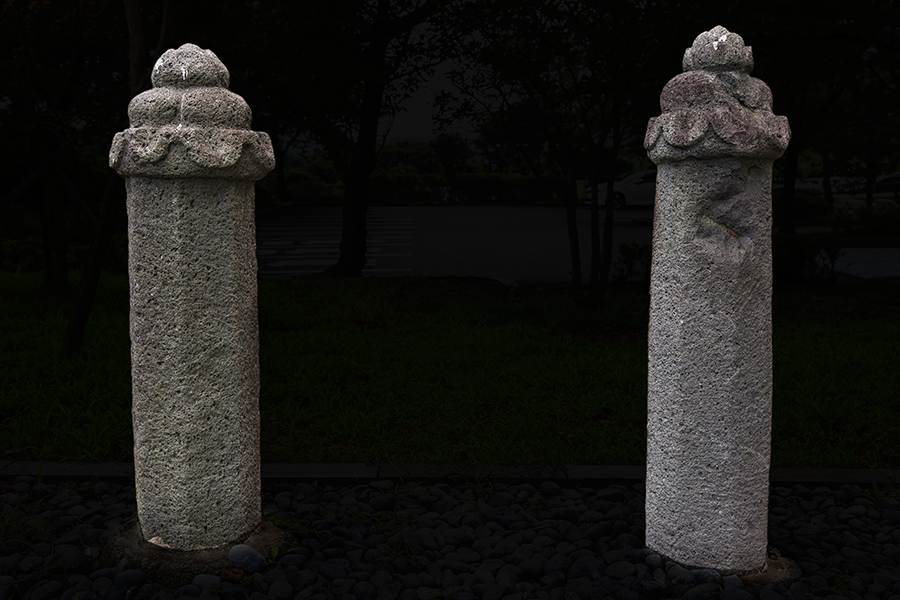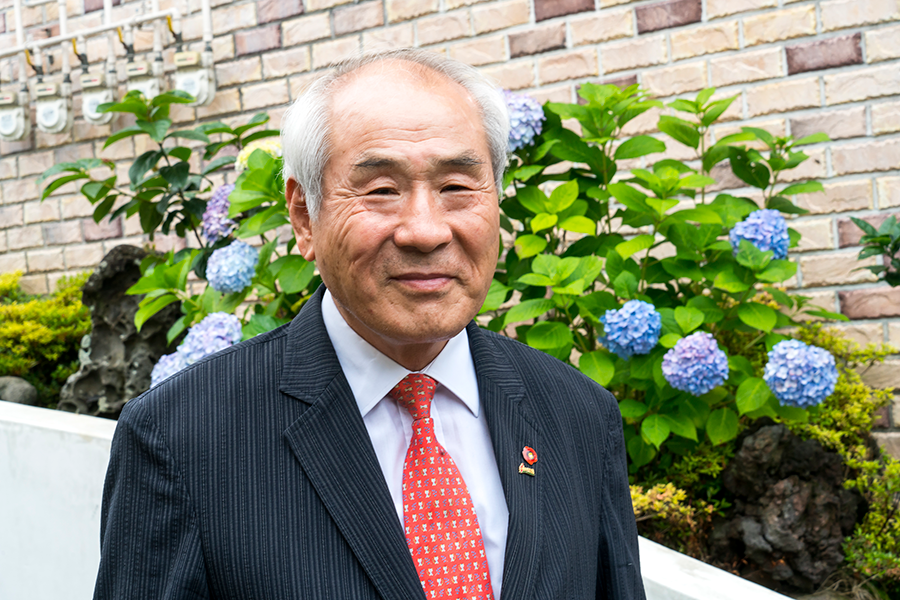
I couldn’t speak of 4·3 while growing up
The red rust, at first blush, looks like a bloodstain.
The mangjuseok might have been shot to save people from pain,
now left with a scar inlaid by history as a message to sustain.
The stone pillars stand upright, fighting oblivion,
with solidity to outlive eternity,
grasping the metal, and wailing at the merciless gunshots of that day.
Two Mangjuseok pillars guarding the graveyard.
One of them was damaged when the counterinsurgency forces fired on it, mistaking it for an armed guerilla during Jeju 4·3. The rusted bullet is still stuck in the pillar.


“Two mangjuseok pillars stand at the entrance of Jeju 4·3 Peace Park.
My family donated them to the park, and one of them has a bullet stuck in it. We had a family cemetery near the hospital in the Sancheondan area (near the northern foot of Mt. Hallasan). The mangjuseok poles guarding the graveyard were about 1.5 meters in height. During 4.3, when the military and police forces conducted scorched earth operations in the mid-mountain villages, people used to live in hiding in fields among pine trees or behind the Jeju basalt stone walls surrounding the graveyards. So, when some officers saw the mangjuseok at night, they mistook the pillars for a person and opened fire.
During the 4·3-related exhumation project, a cave inspection team discovered my father’s remains 37 years after his death. My family buried his remains at our family grave site. That’s when we donated the pillars to the park. Think about what a bullet stuck in the mangjuseok could mean. As you know, Jeju’s stone is quite durable. But one of the pillars was broken to pieces and the other is left with a rusted bullet inside of it.
When I was four, my father, who was the third-generation only son of his family, participated in the counterinsurgency operation in the village of Gyorae. Returning home, he was caught by mountain-based guerrilla forces. Of the five captives, four were shot to death and only one innocent person came home alive.
Before my father passed away, in the lunar equivalent of December in 1948, the eldest of his five sons was a newly married groom aged 20. He came home only at night but remained in hiding during the day. If one member was caught, the entire family would face annihilation. My father used to be a community leader back then. One day, we saw a military unit stationed at Hamdeok Beach, on the current site of a parking lot. The police forces joined the military and convened all the villagers at the playground of the nearest elementary school. They ordered the villagers in hiding to turn themselves in. According to my mother, one of the seven people who surrendered to the police ran away.